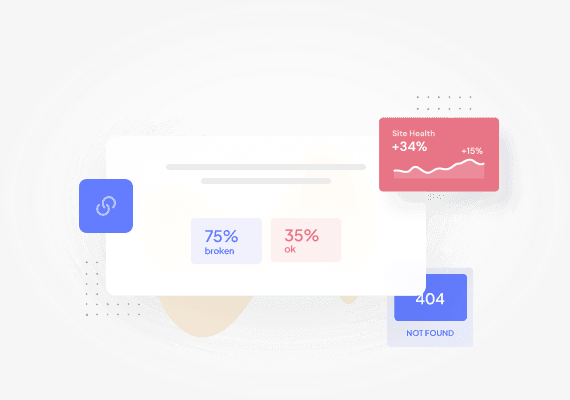
Performing a basic SEO audit is an essential step to ensure your website is optimized for search engines and provides a great user experience. Regular audits help identify issues, opportunities, and strategies for improvement, ensuring your site performs well in search engine rankings. This guide provides a step-by-step approach to conducting a comprehensive basic SEO audit for your website.
1. Understand the Importance of an SEO Audit
An SEO audit is like a health check-up for your website. It helps identify:
- Technical issues affecting site performance.
- On-page optimization opportunities.
- Backlink health and off-page SEO status.
- Content gaps and user experience challenges.
By addressing these aspects, you improve your site’s visibility, ranking, and user engagement.
2. Set Clear Goals for Your Audit
Before diving into the audit, define your objectives. Are you looking to:
- Improve organic traffic?
- Identify and fix technical issues?
- Enhance user engagement?
- Optimize for specific keywords?
Having clear goals ensures your audit focuses on areas that matter most to your business.
3. Technical SEO Audit
A technical audit ensures that your website meets search engine requirements. Here are the key steps:
A. Check Website Speed
Site speed is critical for both SEO and user experience. Use tools like:
Analyze the results and address issues such as large images, unoptimized code, or server response times.
B. Mobile-Friendliness
With most users browsing on mobile devices, ensure your website is mobile-friendly. Use Google’s Mobile-Friendly Test to identify and fix any issues.
C. Indexing and Crawling
Ensure that search engines can crawl and index your site effectively:
- Check your robots.txt file.
- Use Google Search Console to monitor crawl errors.
- Submit an updated XML sitemap to search engines.
D. Secure Your Website
Ensure your site uses HTTPS for secure connections. Non-secure sites (HTTP) can negatively impact SEO and user trust.
E. Fix Broken Links
Broken links harm user experience and SEO. Use tools like Screaming Frog or Ahrefs to identify and fix broken internal and external links.
4. On-Page SEO Audit
On-page SEO focuses on optimizing individual pages for search engines and users.
A. Keyword Optimization
- Identify the primary and secondary keywords for each page.
- Ensure keywords are strategically placed in titles, headers, meta descriptions, and content.
B. Meta Tags
- Check the title tag and meta description for each page.
- Ensure they are unique, compelling, and include target keywords.
C. Content Quality
- Ensure content is unique, valuable, and answers user queries.
- Optimize readability with short paragraphs, bullet points, and subheadings.
- Use multimedia like images and videos to enhance engagement.
D. Internal Linking
- Link to relevant pages within your site to improve navigation and distribute link equity.
E. Image Optimization
- Compress images to reduce load times.
- Use descriptive file names and include alt text for accessibility and SEO.
5. Off-Page SEO Audit
Off-page SEO involves factors outside your website that influence rankings, such as backlinks and brand mentions.
A. Analyze Your Backlink Profile
- Use tools like Ahrefs, SEMrush, or Moz to evaluate your backlinks.
- Identify and disavow toxic or spammy links.
- Focus on acquiring high-quality backlinks from authoritative sites.
B. Check Social Signals
- Monitor your brand’s presence and engagement on social media platforms.
- Encourage social sharing to amplify content reach.
6. User Experience (UX) Audit
User experience directly impacts SEO rankings and conversions. Focus on:
A. Website Navigation
- Ensure menus and links are intuitive and easy to use.
- Avoid cluttered designs that confuse users.
B. Mobile Usability
- Test the mobile version of your site for responsiveness and usability.
C. Engagement Metrics
- Use Google Analytics to analyze bounce rates, session duration, and pages per session.
- Identify and address pages with poor performance.
7. Content Audit
High-quality content is the backbone of SEO. Assess:
A. Content Relevance
- Ensure all content aligns with user intent and target keywords.
B. Update Outdated Content
- Refresh old content with updated statistics, trends, or insights.
C. Identify Content Gaps
- Use tools like SEMrush or AnswerThePublic to find topics your audience is searching for but your site doesn’t cover.
8. Analyze Your Competitors
Understanding your competitors’ strategies can uncover opportunities for improvement.
A. Keyword Analysis
- Identify keywords your competitors rank for but you don’t.
B. Content Comparison
- Compare the quality, depth, and structure of their content with yours.
C. Backlink Analysis
- Study their backlink profiles to find potential link-building opportunities.
9. Monitor Your Progress
SEO is an ongoing process. Use tools to track your performance:
- Google Search Console for search visibility and indexing.
- Google Analytics for traffic and engagement metrics.
- Rank tracking tools like SEMrush or Ahrefs to monitor keyword positions.
10. Create an Actionable Plan
After completing your audit, summarize your findings and create a prioritized action plan:
- Fix critical technical issues first.
- Optimize on-page and content elements.
- Develop a link-building and content strategy.
- Regularly review and update your SEO efforts.
Final Thoughts
Performing a basic SEO audit is crucial for improving your website’s performance and search engine rankings. By systematically addressing technical issues, optimizing on-page elements, enhancing user experience, and monitoring progress, you can ensure your website stays competitive in search results. Regular audits, combined with a commitment to continuous improvement, will help your site achieve long-term SEO success.







